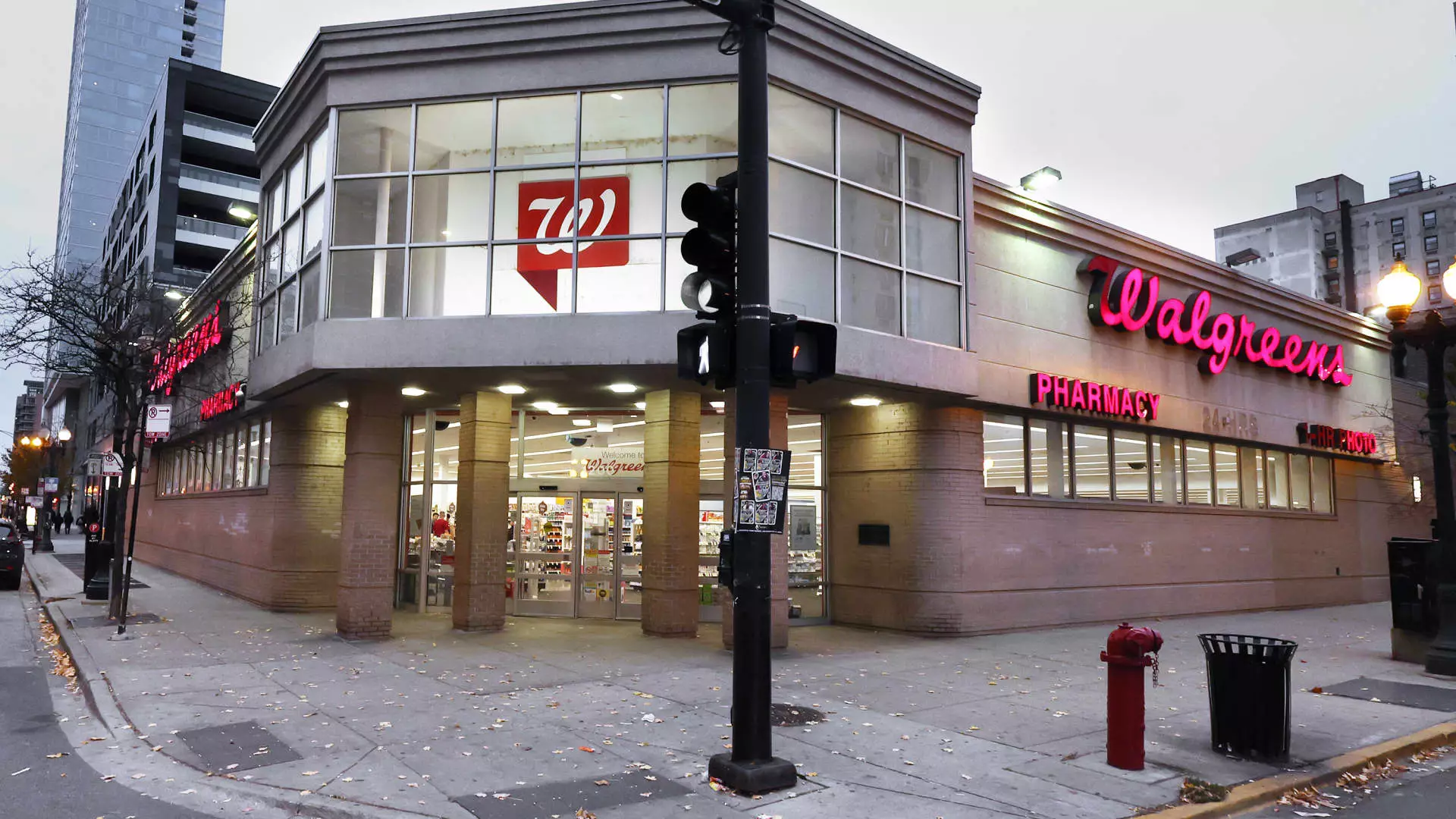Walgreens has recently announced its fiscal second-quarter earnings, presenting a rather mixed bag that both excites investors and raises eyebrows among industry watchers. The numbers showed that revenue outperformed Wall Street’s expectations, coming in at $38.59 billion—an increase of 4.1% from the previous year. However, a deeper analysis reveals that Walgreens is grappling with an array of monumental challenges that could jeopardize its future, especially as it transitions toward a private ownership model spearheaded by Sycamore Partners. This $10 billion deal, while promising to streamline operations, is also a troubling indicator of Walgreens’ woes as a public entity.
Cost-Cutting vs. Legitimate Growth
While it’s commendable that Walgreens has undertaken cost-reduction initiatives, such as closing underperforming stores, this begs the question: are these moves genuinely strategic, or are they merely band-aid solutions for deeper systemic issues? The company reported a net loss of $2.85 billion in the fiscal second quarter, significantly less than the $5.91 billion loss from the same period the year prior. This is not just a cause for cheer; it signals an alarming trend in operational management. The CEO, Tim Wentworth, paints a rosy picture of disciplined cost management and healthcare improvements, yet the realities are stark. Achieving sustainable profitability is fundamentally tied to not just slashing costs but fostering organic growth—a feat that seems elusive amidst rising competition from CVS, retail giants, and even tech disruptors like Amazon.
The Weight of Legal Strife
When Walgreens announced it would be shelling out $969 million in legal settlements related to opioid prescription lawsuits, it shouted at anyone paying attention: the past is far from forgiven. Legal issues are sinking an already floundering ship. This financial hit significantly impacts operational cash flow, diverting resources that could otherwise be invested in pivotal areas such as technology and customer experience. Are the cost cuts truly facilitating a turnaround, or is the company merely rearranging the deck chairs on its Titanic-like trajectory? Legal battles can tarnish reputations and drain resources, jeopardizing Walgreens’ path to recovery.
Desperate Times Call for Desperate Measures
The company’s pivot into healthcare investing, particularly its partnership with VillageMD, seems to be motivated by desperation rather than strategic vision. While some may argue that Walgreens is trying to reinvent itself as a healthcare provider, the reality is that this is an industry replete with its own complications and fierce competition. The marketplace is rapidly evolving, and Walgreens appears to be scrambling to catch up. The healthcare landscape is dominated by robust players who already have established patient networks and proven track records. Entering this sector without a clear differentiator raises questions about Walgreens’ long-term viability.
The Investor’s Dilemma
For investors, the decision to back Walgreens becomes increasingly complex. The company’s stock may see short-term gains, especially with cost-cutting measures and the uptick in healthcare investments, but the long-term prospects may remain bleak. With Walgreens withdrawing its fiscal 2025 guidance, uncertainty looms larger than ever. The company’s track record has rendered it a volatile investment at best. Short-term gains may fuel enthusiasm, but sustainability is paramount for any investment, and Walgreens appears to be teetering on a precipice.
Will Transitioning to Private Ownership Save the Day?
The transition toward private ownership under Sycamore Partners holds both promise and peril. While going private could facilitate critical changes without the immediate pressure of quarterly earnings reports, the question remains: Can a fundamental overhaul even be enough to shift long-term market perceptions? A reliance on private equity often carries its own pitfalls, as investors expect rapid returns, potentially placing even more strain on an already beleaguered operation.
Walgreens represents a critical case study in modern retail and healthcare convergence. As the company keeps its fingers crossed for a turnaround, the myriad challenges that await could paint a very different picture for both employees and shareholders alike.


Leave a Reply